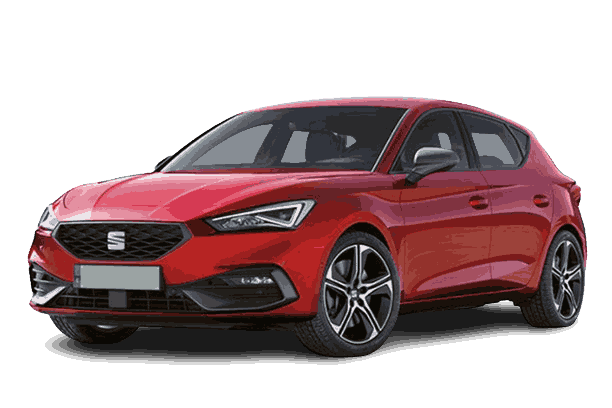SEAT - Spanish Engineering, Innovation & Style
Founded in 1950 in the heart of Catalonia, SEAT (Sociedad Española de Automóviles de Turismo) has carved a unique niche in the global automotive industry, embodying a blend of dynamic design, innovative technology, and spirited performance. As Spain’s largest car manufacturer and a proud member of the Volkswagen Group since 1986, SEAT has transcended its initial role as a provider of mobility solutions for post-war Spain to become a brand synonymous with youthful energy, sporty character, and cutting-edge tech. With a rich history that encapsulates a journey from assembling Fiat models under license to creating an iconic identity with models like the Ibiza and Leon, SEAT has continuously evolved.
Today, the brand is at the forefront of automotive innovation, exploring new horizons with electric vehicles and advanced connectivity features, all while maintaining its heritage of design excellence and engineering prowess. SEAT’s commitment to sustainability, performance, and technology positions it as a key player in shaping the future of mobility.
from National Icon to Global Contender
The Evolution of SEAT
The story of SEAT (Sociedad Española de Automóviles de Turismo) is a testament to resilience, innovation, and the pursuit of excellence in the automotive industry. Founded in 1950 in Barcelona, Spain, SEAT emerged with a mission to motorize a nation recovering from the ravages of civil war, becoming the very symbol of progress and modernity in post-war Spain. Initially, SEAT’s journey began by assembling Fiat models under license, a partnership that laid the foundation for its automotive expertise and helped establish a strong domestic market presence.
- The Rise of a Spanish Powerhouse: By the 1960s, SEAT had firmly established itself as Spain’s leading car manufacturer, embarking on an era of expansion and innovation. The launch of the SEAT 600 in 1957 was a pivotal moment, becoming an icon of Spanish mobility by making car ownership accessible to the masses.
- Breaking New Ground: The 1980s marked a significant turning point for SEAT. The termination of its licensing agreement with Fiat in 1982 prompted SEAT to develop its own models, showcasing its prowess in design and engineering. This period also saw the beginning of a strategic alliance with the Volkswagen Group, which acquired a majority stake in SEAT in 1986.
- A Legacy of Innovation & Performance: SEAT’s commitment to innovation and performance has been evident in its impressive lineup of vehicles over the years. The SEAT Ibiza, introduced in 1984, became one of the brand’s most iconic models, embodying the youthful and dynamic spirit that SEAT is known for.
- Embracing the Future: Today, SEAT is at the forefront of the automotive industry’s shift towards sustainability and digitalization. With the launch of the SEAT Mii electric, the brand has made significant strides in the electric vehicle market, underscoring its commitment to eco-friendly mobility solutions.
Throughout its history, SEAT has evolved from a national icon to a global contender, continually pushing the boundaries of automotive design and technology. With its eyes set on the future, SEAT remains dedicated to delivering vehicles that are a reflection of its heritage of excellence, innovation, and a passion for driving.

All Seat Models
SEAT's Diverse Models Lineup
Hatchbacks
- SEAT Ibiza: A compact and energetic hatchback that offers a perfect blend of performance and efficiency, making it ideal for both city driving and longer journeys.
- SEAT Leon: Known for its sharp design and dynamic driving experience, the Leon stands out in the compact segment with advanced technology and safety features.
Sedans
- SEAT Toledo: A spacious and versatile sedan that combines comfort, functionality, and sleek design, catering to families and professionals alike.
SUVs
- SEAT Arona: A stylish and compact SUV that delivers agility and versatility, perfect for urban adventures and beyond.
- SEAT Ateca: Offers a great mix of practicality, style, and performance, making it a strong contender in the mid-size SUV category.
- SEAT Tarraco: SEAT's largest SUV, providing ample space, advanced technology, and comfort for families, with options for seven seats.
Electric & Hybrid Vehicles
- SEAT Mii electric: A fully electric city car that combines eco-friendly driving with agility and easy handling, ideal for urban environments.
- SEAT Leon e-HYBRID: A plug-in hybrid version of the popular Leon hatchback, offering a balance between electric driving and long-range capability.
- SEAT Tarraco e-HYBRID: A plug-in hybrid that adds eco-friendly efficiency to the spacious and versatile Tarraco SUV.
Need SEAT Repairs? Contact Us & Book an Appointment Now
Seat Innovations & Styles
SEAT's Advanced Automotive Technology
SEAT, Spain’s leading automobile manufacturer, has long been at the forefront of integrating cutting-edge technology into its vehicles, combining innovative engineering with a commitment to enhancing driving experiences. As part of the Volkswagen Group, SEAT leverages shared expertise and resources to develop technologies that set benchmarks in safety, efficiency, connectivity, and sustainability within the automotive industry. Here’s a deep dive into the advanced technological features that distinguish SEAT in the competitive automotive landscape.
- Electrification & Hybrid Technology: SEAT is steering towards a greener future with its significant investments in electrification and hybrid technology. The launch of the SEAT Mii electric marked the brand’s foray into the electric vehicle (EV) market, offering an efficient and zero-emissions urban mobility solution. The introduction of e-HYBRID models like the SEAT Leon and Tarraco e-HYBRID represents SEAT’s commitment to reducing its carbon footprint while providing drivers with the flexibility of both electric and combustion engine power.
- Connectivity &Infotainment: Understanding the importance of digital connectivity, SEAT equips its vehicles with the Full Link system, enabling seamless smartphone integration via Apple CarPlay, Android Auto, and MirrorLink. The SEAT Connect app offers remote access to vehicle data, allowing drivers to manage charging, control the air conditioning, and locate their cars remotely. Advanced infotainment systems featured in SEAT models boast high-resolution touchscreens, voice control, and navigation systems that include real-time traffic updates and parking information, ensuring an interactive and informative driving experience.
- Advanced Driver Assistance Systems (ADAS): SEAT’s commitment to safety is evident through its suite of Advanced Driver Assistance Systems (ADAS). These include adaptive cruise control, front assist with city emergency braking, lane assist, traffic sign recognition, and high beam assist. SEAT models also feature the innovative Predictive Adaptive Cruise Control, which uses GPS data to adjust the vehicle’s speed based on road conditions ahead, such as bends, roundabouts, and speed limits, enhancing both safety and comfort.
- Dynamic Chassis Control (DCC): Dynamic Chassis Control (DCC) is another hallmark of SEAT’s technological prowess, allowing for real-time adjustment of the car’s suspension settings. This system optimizes driving dynamics according to road conditions and driving style, offering a balance between comfort and sportiness. Drivers can select from various driving modes, including Eco, Normal, Sport, and Individual, to tailor the driving experience to their preference.
- Digital Cockpit: The SEAT Digital Cockpit merges aesthetics with functionality, providing drivers with a customizable high-resolution digital display. This innovative feature consolidates essential information, such as navigation data, driving metrics, and ADAS notifications, into a clear and concise dashboard, enhancing driver focus and vehicle control.
As SEAT continues to evolve, its dedication to incorporating advanced technology into its vehicles remains unwavering. By prioritizing electrification, connectivity, safety, and driver comfort, SEAT not only meets the current demands of the automotive market but also anticipates the future needs of drivers worldwide, cementing its position as a leader in automotive innovation.
Frequently Asked Questions
FAQs for SEAT Vehicles
SEAT provides a variety of powertrain options, including traditional petrol and diesel engines, advanced plug-in hybrid electric vehicles (PHEVs), and fully electric vehicles (EVs) to cater to diverse driving needs and preferences.
SEAT vehicles come equipped with a suite of standard safety features, including Electronic Stability Control (ESC), Anti-lock Braking System (ABS), front and side airbags, and ISOFIX points for child seats. Advanced models include additional features like Adaptive Cruise Control, Lane Assist, and Front Assist.
SEAT’s Full Link system enables seamless integration of your smartphone with the vehicle’s infotainment system, supporting Apple CarPlay, Android Auto, and MirrorLink. This allows drivers to access apps, navigation, and music through the vehicle’s touchscreen or voice commands.
Yes, with the SEAT Connect app, you can remotely control and monitor your vehicle. Functions include remote locking/unlocking, checking vehicle status, setting charging schedules for EVs and PHEVs, and even remotely activating the air conditioning.
The range of SEAT’s electric vehicles varies by model and driving conditions. For instance, the SEAT Mii electric offers a range of up to 260 km on a single charge, making it ideal for city driving and short commutes.
SEAT is committed to environmental sustainability through its ECOMOTIVE range, focusing on reducing emissions and increasing efficiency across its model lineup. This includes the development of electric and hybrid vehicles, as well as efficient petrol and diesel engines.
The Digital Cockpit in SEAT vehicles offers customization options, allowing drivers to choose what information is displayed, from traditional speed and RPM gauges to full navigation maps and media information, ensuring that the most relevant data is always at the driver’s fingertips.
